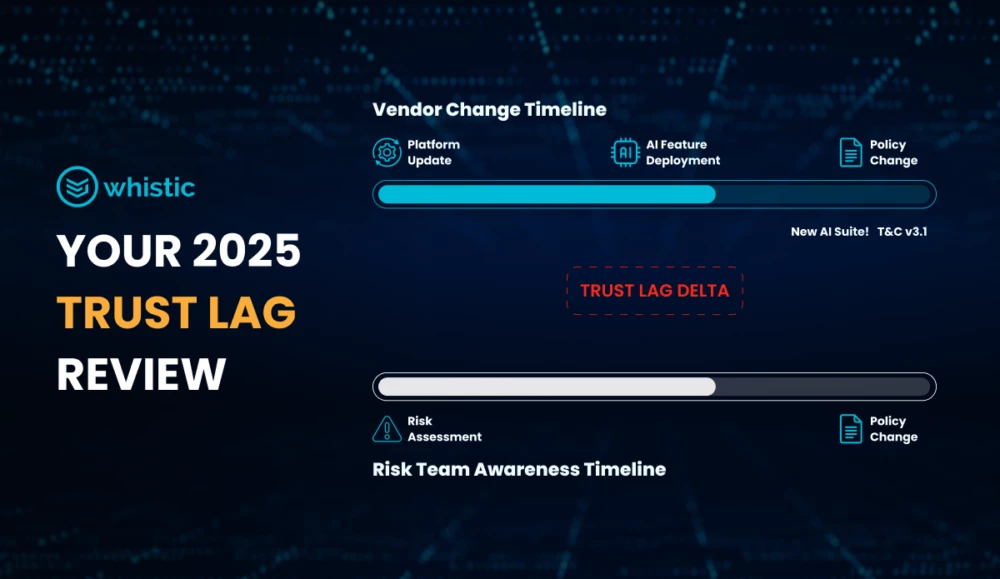A 5-Step Guide for CISOs to Eliminate Trust Lag and Evolve Vendor Oversight in 2026

As CISOs wrap up their 2025 reviews, one theme stands out: vendors changed faster than most risk programs could keep up. That timing gap—Trust Lag—creates blind spots where outdated assumptions linger, documentation goes stale, and critical updates aren’t caught until it’s too late. To help leaders enter 2026 with sharper visibility and fewer surprises, this guide outlines five practical actions to identify where Trust Lag occurred this year and how to close those gaps for good.
Five Ways to Identify and Eliminate Trust Lag From Your 2025 Review
1. Pinpoint Where Trust Lag Occurred This Year
Start your 2025 review by identifying the exact moments where vendor reality changed before your team did. Look for:
- AI feature releases you learned about too late
- Certifications that expired before your next scheduled review
- Policy or infrastructure changes not flagged in time
These moments are your Trust Lag. Documenting them gives you a map of where timing broke down.
2. Measure the Delay Between Vendor Change and Team Response
Trust Lag is fundamentally a timing problem, so quantify it:
- How long after a vendor change did risk learn about it?
- How long after learning did the review actually happen?
- How far past expiration did documentation sit before being refreshed?
This creates a measurable “Trust Lag Delta” that you can improve in 2026.

3. Identify Where Point-in-Time Reviews Failed You
2025 likely exposed the limits of annual or periodic assessments.
As part of your year-end review, assess:
- Which major vendor changes occurred between assessments
- Which quarterly reviews surfaced surprises that could’ve been caught earlier
- Where stale assumptions gave vendors outdated “approved” status
This helps justify shifting toward more real-time oversight in 2026.
4. Reclassify Vendors by How Often They Change, Not Just Risk Tier
A major source of Trust Lag this year came from vendors whose pace of change outstripped your assessment rhythm. As you review 2025, pay attention to:
- Vendors pushing frequent updates
- Vendors introducing new AI-driven features
- Vendors altering infrastructure or data flows
For 2026, factor “change frequency” into vendor risk scoring. Fast-moving vendors introduce fast-moving risk—and the biggest timing gaps.
5. Identify Where Automation Would Have Eliminated Lag
The final step in a Trust Lag review is determining where manual processes couldn’t keep up.
Highlight where automation would have prevented:
- Stale evidence
- Missed feature launches
- Overdue reassessments
- Late audit findings
In 2026, use these insights to target automation where it closes the biggest timing gaps and eliminates Trust Lag entirely.
The Takeaway
Heading into 2026, CISOs are aiming for greater visibility, fewer blind spots, and more consistent audit readiness. Understanding the specific timing gaps that surfaced in 2025 allows you to set data-driven priorities—not just surface-level awareness—and make informed decisions that strengthen your organization. Your path to closing Trust Lag begins with that clarity.
Want to dive deeper?
Explore the full Speed to Trust White Paper — a 15-page guide on eliminating trust lag and modernizing vendor risk management.
